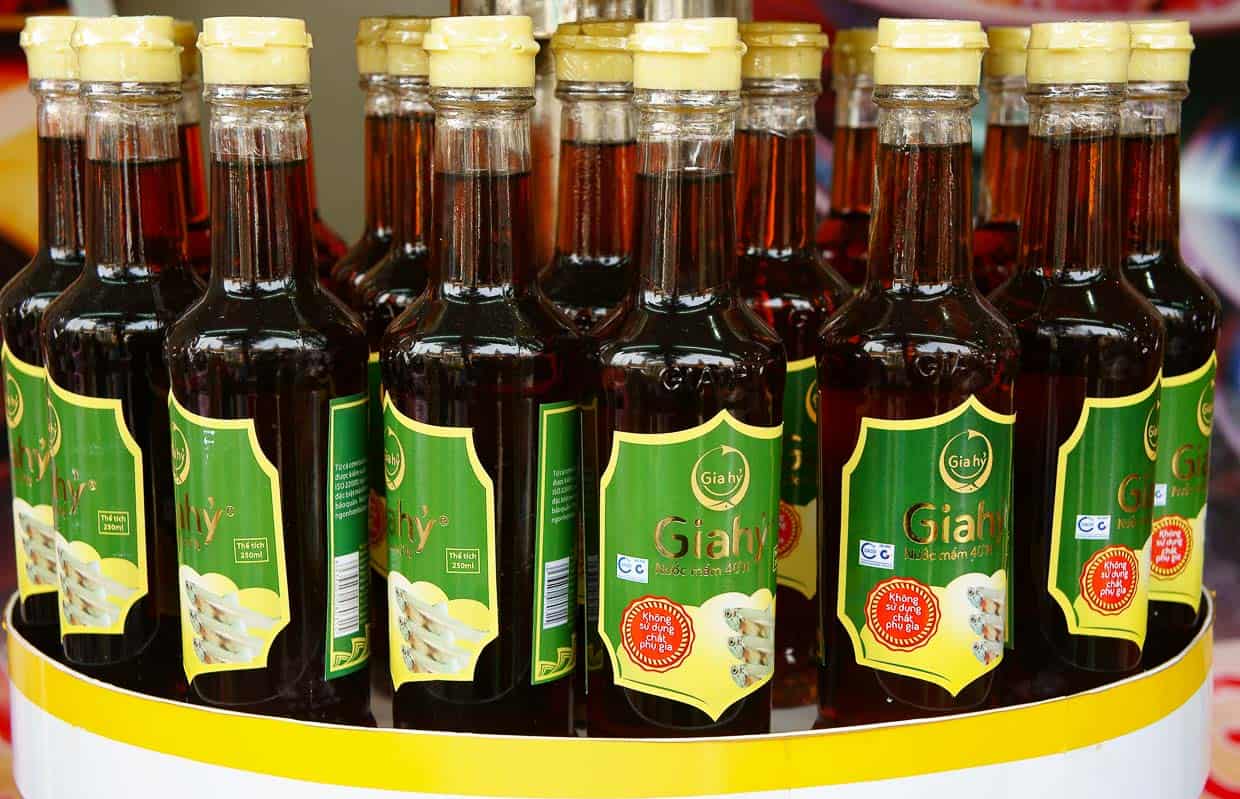“Nuoc mam” might not be a household name for everyone, but in the context of Vietnamese cuisine, it’s essential. This premium fish sauce is the kind of ingredient that quietly shapes a dish, subtly bringing layers of flavor into focus. If you’re new to it, consider this an introduction to a sauce that has charmed generations in Vietnam and now the world.

Mired in history, deceptively complex and capable of amping up the flavor of just about any dish, this Vietnamese fish sauce is truly an unsung hero of the condiment world. Here’s why it’s such a beloved culinary delight.
A drop of history
Nuoc mam’s history goes back thousands of years — the ancient Greeks fermented fish to use as a seasoning and this technique eventually made its way to Southeast Asia, where it quickly became a crucial part of the diet for fishermen and coastal communities, providing much-needed protein and flavor.
Today, fish sauce is an indispensable ingredient in Vietnamese cuisine, and has been for more than 400 years. It’s also popular in other Southeast Asian and non-Asian cuisines, where it can be used to add depth of flavor to any number of dishes.
How the magic is made
In the best fish sauces, ingredients are humble and few — nothing more than anchovies, salt and time — but the end result is a magical elixir that makes all the difference when it’s added to a dish.
The beauty of premium fish sauce lies in its simplicity. But don’t let the humbleness of the ingredients fool you; the alchemy happens in the fermentation process, a carefully orchestrated interplay between patience and precision, nature and time.
The process is simple on the surface, but inside wooden barrels, where anchovies are layered with salt, a complex dance of biochemistry unfolds. Over several months, sometimes even years, salt penetrates the fish and breaks down the proteins, fats and sugars, and then the process of fermentation takes over.

Microorganisms consume the sugars, turning the solids into liquid and giving rise to amino acids, which are the basis of the umami flavor. Fats convert into fatty acids, adding richness and depth, while sugars transform into simpler forms, rounding out the flavor profile with a hint of sweetness.
When the time is deemed right — usually marked by the rich aroma and the separation of liquid from the fish — the barrels are unsealed. The liquid is carefully extracted to yield the prized first pressing, also known as “nước mắm nhi,” which is the purest and most flavorful extract and what gives it that distinctive taste. Subsequent pressings are also extracted and used to make lower-grade fish sauce.
“Nuoc mam is one of those little-known ingredients that packs a huge punch. It makes a big difference in so many recipes to add umami and a depth of flavor you just can’t get without it. A little goes a long way, though, so definitely don’t overdo it. Don’t be afraid of it, and don’t skip it in any Asian recipes that call for it!”
— Michelle Price, Honest and Truly

FDL’S 75 Best Bites

Our cookbook with 75 tasty recipes will be your go-to kitchen companion for easy dinners with ad-free recipes right at your fingertips. Crafted by experienced chefs and recipe developers, this collection offers a treasure trove of tried-and-true dishes that make mealtime a breeze.
Get the Recipe: FDL’S 75 Best Bites
The nuoc mam difference
If you’re thinking, “isn’t all fish sauce the same?” you’d be wrong. There’s a world of difference between your average fish sauce and authentic nuoc mam or the best quality premium Thai fish sauces.
Authentic nuoc mam is made from anchovies harvested from the waters around the Vietnamese island of Phu Quoc and uses only that prized first-press fish extract. And unlike some other sauces, it is all-natural and contains no additives or preservatives.
Subsequent pressings are also used to make fish sauce, each one lighter and less intense but by no means insignificant. These later extracts still have their place in cooking, where their subtler flavors integrate seamlessly into a variety of dishes.
Some fish sauces contain other ingredients like wheat extract, sugar, monosodium glutamate, molasses or caramel color to disguise an inferior product by artificially amping up the flavor and color. If you want the best, look for one that only contains anchovies and salt, and avoid any with preservatives like sodium benzoate.

Versatility in the kitchen
Fish sauce may be most commonly found in Southeast Asian kitchens, but its reputation has spread far and wide, and that’s largely because of how versatile it is. It’s that little something-something you can add to pump up the flavors in an instant.
Of course, if you’re cooking Vietnamese noodles or Thai curries, add a few drops and boom. You’ve added an extra layer of flavor that elevates the dish to a whole new level.
It’s also a key player in marinades, dressings and sauce, imparting that distinctive umami flavor.
Have you ever had a salad or spring roll in a Vietnamese restaurant and wondered what the secret ingredient was? Well, now you know — it’s probably the humble nuoc mam.
And even in non-Asian cuisine, fish sauce is a convenient way to add umami. Try it in chicken broth, vinaigrette, as a substitute for anchovies in Caesar salad dressing, meat marinades, stir-fries, fried rice, roasted vegetables, pasta sauce or even in a bloody mary. No one will guess it’s there, but they’ll love the depth of flavor the hit of umami provides.
And it’s not just a behind-the-scenes ingredient; it’s front and center on the dinner table, too. Diners add a few drops to customize their individual bowls of pho or a simple plate of rice and grilled meat.
As a classic Vietnamese dipping sauce, it’s often combined with lime juice, garlic and chili, called “nuoc cham.” A similar sauce recipe in Thailand is called “prik nam pla.”
The enigmatic personality of this unassuming condiment always shines through, making each dish memorable.

How to store fish sauce
If you splurge a little on a premium brand fish sauce, you’ll want to be sure to store it properly so that you can get the most out of that bottle. Fish sauce should be stored in a cool, dark place, preferably in your pantry away from direct sunlight.
Once the bottle is open, it’s a good idea to keep it in the refrigerator to maintain its quality for a longer period. Most fish sauces can last up to a year after opening if stored correctly.
More than just a sauce
Unpretentious in its composition but luxurious in its depth, nuoc mam encapsulates the essence of Vietnamese food: Steeped in tradition and forever focused on an intricate balance of flavors. From its historical roots to its undeniable versatility, nuoc mam truly encapsulates what Vietnamese cuisine is all about: simple ingredients, time-honored techniques and an emphasis on flavor.
Robin Donovan is the author of more than 40 cookbooks, including the bestselling ”Campfire Cuisine,” ”Ramen Obsession,” and ”Ramen for Beginners.” A food writer, recipe developer, and food photographer, she is the creator of the food blog All Ways Delicious, where she shares easy recipes for the best dishes from around the world.